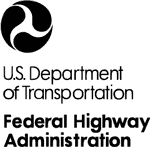U.S. Department of Transportation
Federal Highway Administration
1200 New Jersey Avenue, SE
Washington, DC 20590
202-366-4000
Federal Highway Administration Research and Technology
Coordinating, Developing, and Delivering Highway Transportation Innovations
| FACT SHEET |
| This fact sheet is an archived publication and may contain dated technical, contact, and link information |
|
| Publication Number: FHWA-HRT-09-063 Date: August 2009 |
Publication Number: FHWA-HRT-09-063 Date: August 2009 |
Exploratory Advanced Research . . . Next Generation Transportation Solutions
PDF files can be viewed with the Acrobat® Reader®
Can a self-calibrating signal control system lead to wider adoption of adaptive traffic control systems? The focus of “Next Generation of Smart Traffic Signals,” an Exploratory Advanced Research (EAR) Program project, is a system that—with little human intervention—continuously monitors, learns, predicts, and responds to traffic demands and conditions with optimal signal timing for prevailing conditions. Launched by the Federal Highway Administration (FHWA) in 2007, the study is being conducted by Arizona State University in Phoenix. |
|
|
Although adaptive signal control has demonstrated economic and customer satisfaction benefits—reducing travel time, delays, and stops—and has been used abroad for more than three decades, most jurisdictions in the United States still use fixed-length, time-of-day traffic control systems. A major barrier to wider adoption of “smart” traffic control systems has been cost: initial investments in signal control hardware, communication networks, and comprehensive traffic studies, as well as the cost of periodic updates to adjust systems to changing traffic conditions. Both conventional and adaptive systems require periodic traffic studies and recalibration.
Improvements in technologies associated with adaptive traffic control have paved the way for a next generation of adaptive systems that may spur broader implementation. Hardware memory and processors, including add-on processor boards for legacy hardware, now offer more powerful computing resources at a reasonable cost. Detector technology is also presenting new possibilities, including small, wireless, individual detectors. Finally, the presence of high-bandwidth communications networks in more locales creates new communications possibilities for transportation agencies. This EAR project supports the development of the next-generation architecture and algorithms—RHODESNG—that can harness the power of these technologies.
The goal of this EAR project is an intelligent system that continuously adapts its operations to changing traffic conditions via high-speed communications with vehicles and infrastructure. This system uses self-adaptive algorithms to integrate the position, speed, and queue data received from vehicles and infrastructure sensors and transmitters, accurately perform high-speed computations, make predictions, and continuously adjust its critical parameters based on incoming data—a strategy of monitor, learn, predict, and respond optimally. In addition, data collected through the system can be used for regional and other planning functions.
Among the challenges the project has faced are incompatibilities that must be resolved when interfacing a system with existing hardware, software, and communications systems. Such problems arise frequently during field implementation. Another technical challenge is incorporating IntellidriveSM components into the RHODESNG system—these technologies are under constant development and innovations continue to be introduced.
Continued development is focused on the integration of IntellidriveSM capabilities with RHODESNG. After installation on a hardware platform for continuous testing, RHODESNG with IntellidriveSM will undergo software- and hardware-in-the-loop evaluations and field evaluation at the Maricopa Proving Grounds under real-world conditions. (The City of Tucson and Maricopa County are participating in this project.) The results of the evaluations and details of the architecture and interfaces will be reported. The simulation model and data sets compiled during the development and testing of RHODESNG will be available for dissemination to other researchers.
Ultimately, it is envisioned, self-adaptive control systems that communicate with moving vehicles and intelligent infrastructure will perform many functions to improve mobility and safety:
For more information on this EAR Program project, contact Raj Ghaman, FHWA Office of Operations Research and Development, at 202-493-3270 (email: raj.ghaman@dot.gov).
What Is the Exploratory Advanced Research Program?FHWA’s Exploratory Advanced Research (EAR) Program focuses on long-term, high-risk research with a high payoff potential. The program addresses underlying gaps faced by applied highway research programs, anticipates emerging issues with national implications, and reflects broad transportation industry goals and objectives. To learn more about the EAR Program, visit the Exploratory Advanced Research Web site at www.fhwa.dot.gov/advancedresearch. The site features information on research solicitations, updates on ongoing research, links to published materials, summaries of past EAR Program events, and details on upcoming events. For additional information, contact David Kuehn at FHWA, 202-493-3414 (email: david.kuehn@fhwa.dot.gov), or Terry Halkyard at FHWA, 202-493-3467 (email: terry.halkyard@fhwa.dot.gov). |

